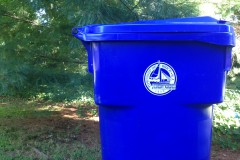The amount of revenue produced by Brick’s recycling program fell in the second half of 2014 thanks to commodities prices falling, at least partially a result of a slow-down in the Chinese economy.
Ocean County officials released figures this week on each county municipality’s revenue from the recycling program. For the second half of 2014, Brick Township will receive $31,939.
Altogether, the county will turn over $270,00 to municipalities. The profit, however, pales in comparison to the real value of the program – more than $3 million saved in so-called tipping fees, the cost to dump items in a landfill.
|
|
“Even if [the profit] was zero, it’s still cheaper than going to a landfill,” said Freeholder James F. Lacey.
Commodities prices have been hurt in recent months. The county is now receiving an average of $6.36 per ton of recyclable materials, Lacey said. It’s far cry from double-digit rates in previous years, the product of less demand in China, where most of the recycled materials end up, and fewer uses for certain materials, such as glass. It also does not help that manufacturing is not a large industry in New Jersey.
At one time, Lacey said, glass was being incorporated into asphalt, a process that is no longer favored by engineers. Now, much of the glass is being shipped to Pennsylvania, where it is used as bedding for pipe.
“Everybody’s trying to come up with something acceptable,” Lacey said. “Recycling is still good, it’s just that the commodities are down.”
County officials say that while prices are down, revenue could ultimately hold steady or even increase if more people recycle. The county has seen an uptick in the rate of recycling participation in recent years, the product of single-stream recycling under which residents no longer have to separate items such as plastic from bottles and cans.
“What we’re losing because of the cost per ton, we can make up in volume, so the more we all recycle the more we all benefit in the long run,” Lacey said.
At the end of the day, county residents are still saving on tipping fees and getting something in return.
“It’s still paying the bills and we’re still giving a dividend,” Freeholder Director John P. Bartlett said.

Advertisement

Police, Fire & Courts
Teacher From Brick, 36, Charged With Carrying on Affair With Student
Brick Life
Adult Autism Transition

Police, Fire & Courts
Teacher From Brick Charged in Another Sex Affair With Student









